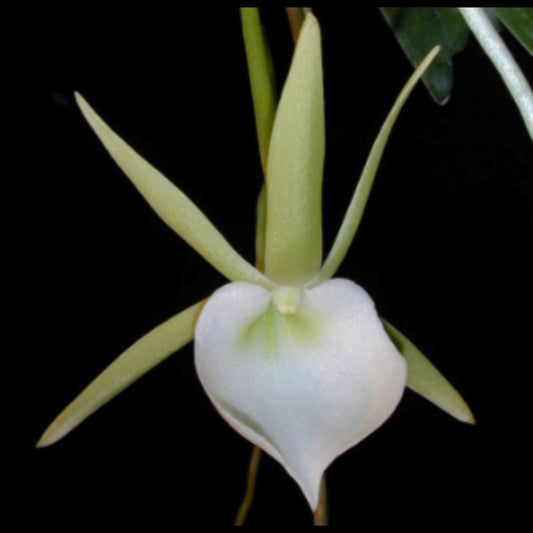
What to Expect When Importing Orchids: Cultivation Advice for Orchids Without Roots
What You Get When Import Orchids: Cultivating Tips for Rootless Beauties
Orchid enthusiasts often find themselves lured by the allure of rare and exotic orchid varieties, often importing these delicate and fascinating plants from around the world. However, many of these imported orchids arrive with one common challenge: lackluster or even completely absent roots. While this may seem like a daunting hurdle, with a little patience and the right care, you can witness these rootless wonders transform into flourishing beauties. In this article, we'll explore the intriguing world of orchid roots, delve into the science behind water absorption, and provide you with indispensable tips for nurturing recently imported orchids.
Understanding Orchid Roots and Water Absorption
If you've encountered the term "stringy roots," you're likely familiar with the sight of these thin, often brown remnants that cling to the base of an orchid. These string-like structures, also known as the xylem and phloem, are what remains after the external covering of a root, including the velamen and cortex, has decayed due to rot. When repotting an orchid with such roots, the question arises: should you trim them away or leave them be?
The Role of Stringy Roots and Their Water Absorption Capabilities
Contrary to the assumption that stringy roots are rendered useless after the loss of their velamen, they can still play a significant role in stabilizing a newly potted orchid. The stringy roots, though lacking in water absorption abilities, provide much-needed support to the plant as it adjusts to its new medium. Removing them could potentially destabilize the orchid and increase the risk of infection.
Unveiling the Science of Water Absorption in Orchids
Understanding how orchid roots absorb water is essential to providing optimal care. The velamen, a specialized layer of dead cells that coats the outer surface of aerial roots, plays a pivotal role in this process. Through capillary action, the velamen swiftly absorbs water from the atmosphere, allowing the orchid to gather moisture from rain, dew, and air droplets. This unique mechanism enables epiphytic orchids to thrive in their natural habitat.
Velamen's Multifaceted Functions
Aside from water absorption, the velamen serves a multitude of functions crucial for an orchid's survival:
-
Efficient Water and Nutrient Uptake: The velamen rapidly absorbs water and nutrients from rainfall and dripping sources, facilitating the orchid's hydration and nourishment.
-
Reduction of Water Loss: By minimizing water evaporation from aerial roots, the velamen conserves moisture, especially significant for freely hanging roots exposed to air.
-
Retention of Nutrients: Charged ions are captured within the velamen's cell walls, aiding in nutrient retention.
-
Mechanical Protection: The velamen's thick layers shield the internal cortex from mechanical damage, particularly important for exposed aerial roots.
-
UVB Protection: The velamen guards against harmful UVB rays, which can damage the orchid's root cortex due to high sunlight exposure.
Caring for Orchids with Stringy Roots: Tips for Success
-
Be Patient: Rootless or stringy-rooted orchids need time to adapt and develop a new root system. Don't rush the process; give them the time they need.
-
Provide Adequate Light: While stringy roots may not absorb water, they still contribute to stability. Ensure your orchid receives the right amount of light to facilitate photosynthesis and overall health.
-
Maintain High Humidity: Especially during the intermediate stage of growth, when orchids are not fully matured, ensure that humidity levels are significantly higher. This mimics their natural habitat and supports their health.
-
Amplify Water Intake: Orchids in the intermediate stage require more water intake than fully grown counterparts. Pay close attention to their hydration needs during this crucial growth phase.
-
Avoid Premature Trimming: Unless stringy roots show signs of molding or disease, it's best to leave them intact to aid stabilization and discourage infection.
-
Encourage New Root Growth: Stringy roots won't grow back their velamen once it's lost. Instead, focus on nurturing new root growth to ensure your orchid's vitality.
Conclusion: Nurturing the Resilience of Orchids
The journey of cultivating recently imported orchids with no healthy root system is a lesson in patience and care. While these string-like remnants might not absorb water as their velamen-rich counterparts would, they still offer stability and support during a crucial phase, particularly during the intermediate stage. By giving them the right light and humidity, giving them more water, and helping new roots to grow, you can see these orchids without strong roots become healthy and beautiful. Just remember, with patience, extra care, and knowing how they grow, your orchids will grow well again. Nature's strength will show, and your orchids will become vibrant once more.








